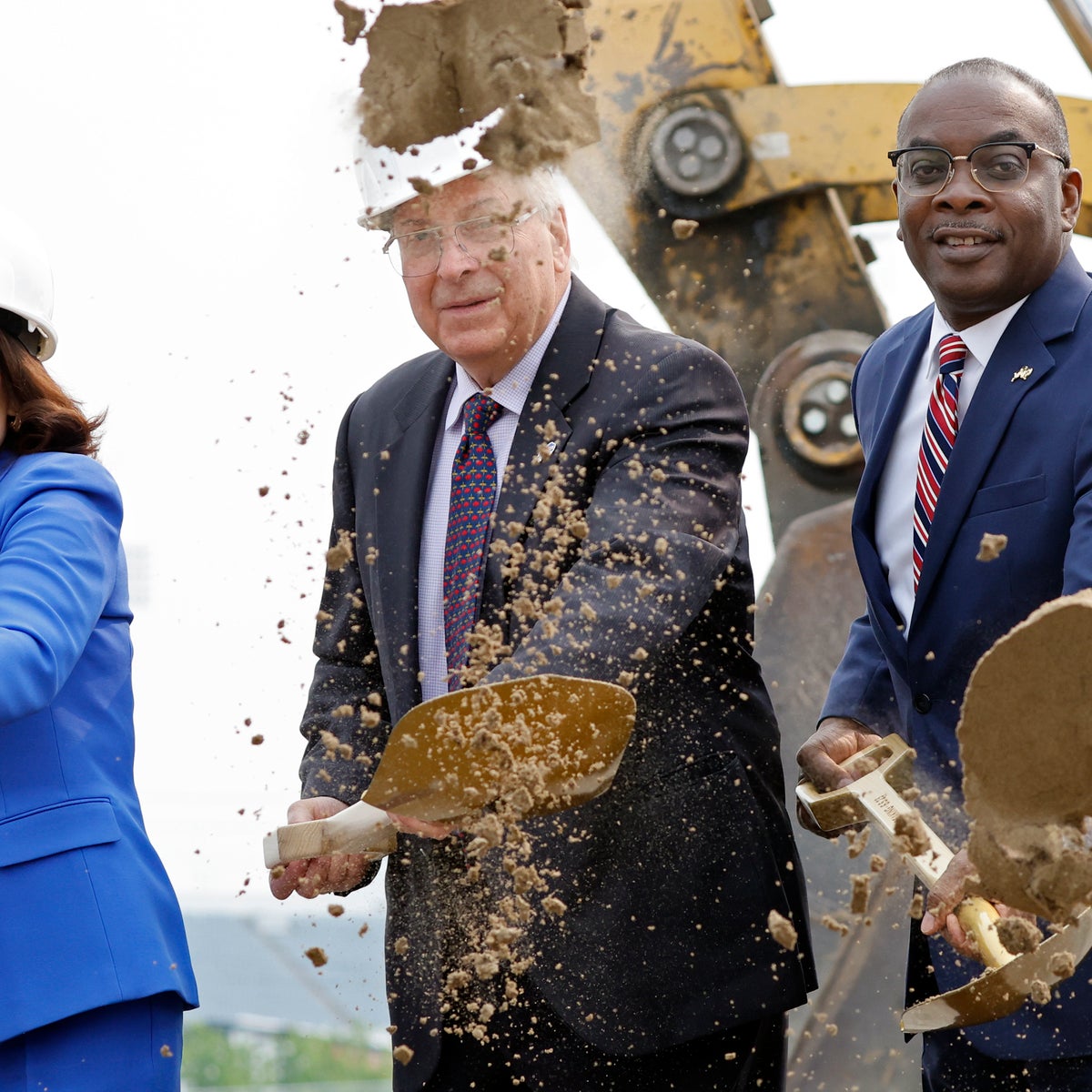When Terry Pegula took over the Buffalo Bills franchise, few could have predicted the long-term vision he carried for the city and its people. Over a decade later, the man who helped bring stability, pride, and purpose back to Western New York has announced what he calls “the most ambitious project in the team’s history” — a $3.6 billion renovation and expansion of Highmark Stadium, designed to make it one of the most advanced sports venues in the world.
Pegula, who has always preferred action over spectacle, delivered the news in a surprisingly emotional statement that caught the sports world off guard:
“This is my last wish when I retire — to leave something that speaks to the soul of Buffalo. A stadium that belongs to the fans, not just the franchise.”

A Vision Rooted in Legacy
For Pegula, this isn’t just a construction project — it’s a love letter to Buffalo. The new Highmark Stadium will not only preserve the essence of the Bills’ fan culture — the noise, the loyalty, the grit — but also usher in a new era of global sports innovation.
According to the initial architectural renderings released by the organization, the stadium’s design draws heavily from New York’s industrial heritage — steel, glass, and curved structures inspired by Buffalo’s riverside skyline — while integrating futuristic features unseen in most American venues.
“It’s about balance,” Pegula explained. “We’re merging the roots of our community with the technology of tomorrow. We’re not just building for games — we’re building for generations.”
$3.6 Billion of Innovation

The renovation, scheduled to begin in late 2026, will completely transform the fan experience. Key features include:
-
Redesigned luxury suites and club levels with panoramic views, private lounges, and custom AR overlays showing live stats, player performance, and play breakdowns.
-
Interactive AR and VR zones throughout the concourse, allowing fans to simulate game moments — even “catching passes” from Josh Allen in immersive virtual reality.
-
High-tech climate-controlled seating to ensure comfort during Buffalo’s famously freezing winters, using advanced geothermal systems that minimize energy consumption.
-
A retractable roof integrated with solar panels and wind turbines, making Highmark Stadium the most energy-efficient stadium in the NFL.
-
“Heritage Square,” a new open-air plaza that will serve as a public gathering space year-round, honoring Buffalo’s sports legends, local artists, and musicians.
According to the project’s lead architect, Rafael Pelli, son of legendary designer César Pelli, the goal is to make Highmark Stadium “the heartbeat of Buffalo’s identity.”
“It’s more than architecture — it’s an emotional space,” Pelli said. “You’ll feel the roar of the fans, the wind from Lake Erie, and the pride of a city that never gives up.”
A Sustainability Milestone
Sustainability is at the core of Pegula’s plan. Nearly 70% of the project’s materials will be locally sourced from New York State manufacturers. The stadium’s renewable energy systems are expected to reduce carbon emissions by 40% and water waste by 50%.
Moreover, the Bills organization will collaborate with the University at Buffalo and multiple environmental research groups to turn Highmark Stadium into a living laboratory for eco-innovation in sports infrastructure.
“We want to prove that sustainability and success can coexist — in Buffalo, of all places,” Pegula said proudly.
Fans at the Heart of the Project
Perhaps the most striking part of Pegula’s announcement wasn’t the technology — but the humanity. He emphasized that this renovation isn’t about profit margins or sponsorships; it’s about giving back to the fans who have stayed loyal through decades of heartbreak and hope.
“When you talk about the Buffalo Bills, you’re talking about the people of Buffalo,” he said. “This stadium belongs to them. It always has.”
To ensure that fans’ voices are heard, the organization launched “The Bills Future Council” — a 50-member community committee made up of longtime season-ticket holders, local business owners, and college students who will contribute to design feedback, accessibility improvements, and event planning.
Already, fans are buzzing with excitement.
On social media, the hashtag #PegulaLegacy trended nationwide within hours of the announcement. One fan wrote:
“He didn’t just save the Bills — he’s saving Buffalo’s spirit.”
Josh Allen Reacts
Buffalo’s franchise quarterback Josh Allen was among the first to publicly react. In a statement shared via the team’s media channel, Allen praised Pegula’s vision and thanked him for his unwavering belief in the city:
“Terry’s heart beats Buffalo blue and red. What he’s doing isn’t just for football — it’s for every kid who grew up dreaming of this team. I can’t wait to play in that stadium and make him proud.”
Sources close to the team say Allen has already been briefed on interactive training integrations planned for the facility — including AI-assisted quarterback simulations and biomechanical motion analysis zones to track throwing efficiency in real time.
Economic and Cultural Impact
According to preliminary estimates, the renovation will create over 25,000 temporary construction jobs and more than 2,000 permanent positions once operational. Local businesses in Orchard Park are already preparing for what they’re calling “the Bills boom.”
City officials say the project could inject over $7 billion in long-term economic benefits into the Western New York region through tourism, new housing, retail expansion, and transportation infrastructure upgrades.
Buffalo Mayor Byron Brown called it “the most transformative project in the city’s modern history.”
“The Bills aren’t just a team,” Brown said. “They’re the heart of this city. This stadium will make that heartbeat louder than ever.”
A Legacy Beyond Football
Those close to Pegula say the project also represents something deeply personal — a farewell gift to the community that embraced him and his family when he purchased the Bills in 2014.
“He’s been talking about legacy for years,” said a close friend. “This isn’t about ego. It’s about gratitude.”
The CEO’s health has reportedly been a motivating factor behind his urgency to finalize the project. Pegula, 74, has slowed down his day-to-day involvement but remains fully engaged in long-term strategy and development.
“When I retire, I don’t want statues or headlines,” Pegula said softly during the press event. “I just want to sit in those stands one more time, hear the fans, and know that Buffalo is ready for the next hundred years.”
Redefining the Future of Football
If successful, the new Highmark Stadium will set a new benchmark for NFL innovation — a model that combines tradition, fan culture, and technology in a single vision. Analysts predict it could influence stadium designs for decades, potentially redefining how sports venues serve both communities and the planet.
ESPN’s Adam Schefter summarized it best:
“This isn’t just a renovation. It’s a revolution — and once again, Buffalo is leading the way.”
Final Words
In an era when sports ownership is often driven by profit and branding, Terry Pegula’s decision feels deeply human — a reminder that football, at its core, is about people, pride, and place.
From the freezing tailgates to the echoing chants of “Let’s Go Buffalo,” every beam of steel and sheet of glass in the new Highmark Stadium will carry the fingerprints of a community that never gave up on its team — and of an owner who never gave up on its people.
As the sun sets on one era and the blueprint of another begins, one thing is certain:
Buffalo’s future will rise — stronger, greener, and prouder — from the very heart of Highmark Stadium.





